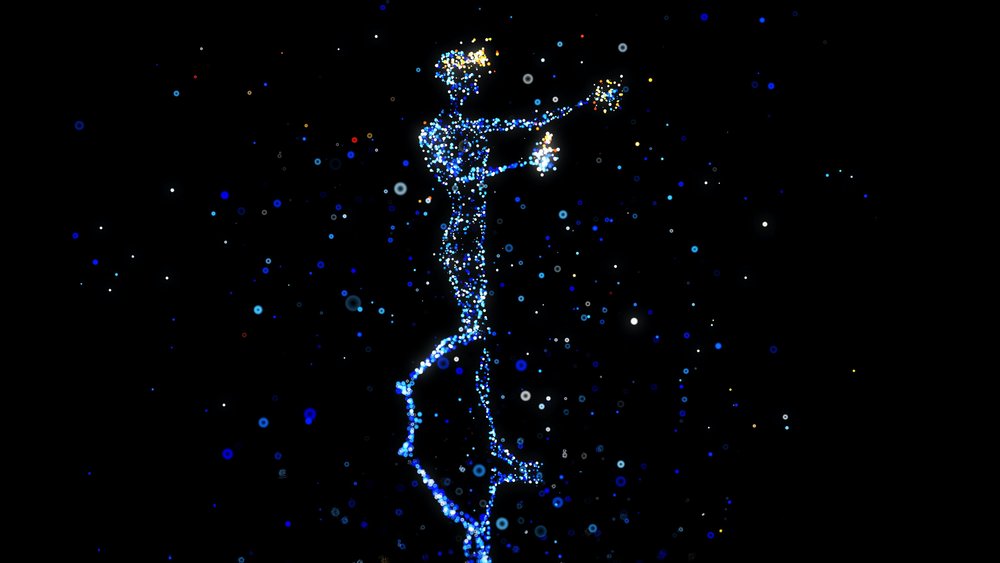Promoted content
Paving a path for the future of virtual marketing /
VMLY&R’s chief experience officer on navigating brand building in the metaverse

‘The metaverse is like a modern-day Gold Rush’, according to Ben Richards, UK chief experience officer at VMLY&R. ‘There are so many unknowns, and with that comes opportunity, but to strike gold, brands have to turn up the right way.’
Richards was speaking after hosting a Food for Virtual Thought roundtable during Contagious’ Worlds Collide event.
As one might expect from an event packed with enthusiastic marketers, many ideas of what the future of the metaverse might hold were bandied about. ‘There’s a lot of different points of view; we are talking about stuff, but no one really gets it,’ said Richards.
‘But, within that noise, there are truths.’
Blue-sky thinking spaces /
One of those truths, he explained, is how not to turn up. According to Richards, the perfect example of ‘precisely the wrong way to infiltrate this world’ is Warner Brothers’ advertising of Christopher Nolan’s Tenet in Fortnite. ‘All they did was play a trailer inside a game,’ he said. ‘It doesn’t have to be so literal. At the moment, brands treat it like a multi-dimensional Photoshop. Don’t just show your ad in these spaces.’
When asked about JP Morgan’s office in 3D game Decentraland, which they built saying ‘it’s better to create something underwhelming than do nothing,’ Richards replied: ‘It isn’t good enough. It’s crucial to turn up in the right way.’
‘It’s not a media space,’ he adds, ‘it’s an experience space.’
Richards stressed that it’s vital for brands to experiment with the different opportunities, but above all else, marketers need to ask where and how their brand fits into the equation. And what value their brand can add to people in the metaverse that they cannot through other platforms and channels. And sometimes, he argued, it is about knowing when to pass.
‘If you’re selling cleaning products,’ he said, ‘don’t go into Sandbox and build a monument of your product. It’s about knowing where to play and understanding each world. You’re never going to make everyone happy, but if you know what you’re doing and apply it correctly, you will see a positive impact.’
Real opportunities /
There is no better example of the real opportunities that the metaverse worlds represent than non-fungible tokens (NFTs), said Richards. He spotlights a campaign by the Australian Open that effectively harnessed the power of digital artwork for engagement, selling out its collection of 6,636 NFTs in three seconds. ‘If you can imbue an NFT with a story and all the things that people really care about, that’s what will lead to success. Try to be useful and entertaining.’
Another campaign Richards highlighted for its innovative use of NFTs was the Royal Canadian Legion’s Immortal Poppy initiative. The non-profit 3D-scanned real poppies plucked from Belgian fields and turned them into digital artworks engraved with the names of all 118,0000 Canadian soldiers who died during the First World War. Within two weeks, the charity raised $40,000 CAD from NFT sales.
‘There’s a lot of inauthenticity going on with brands just chancing it, but those campaigns stand out, and both of them connected the digital with the real,’ said Richards. ‘They have set the bar for what we should all be trying to achieve.’
Of course, that’s easier said than done. But Richards believes a good first step that brands can take is to ‘get educated, get into it and experiment’.
‘We do know that there are going to be virtual spaces, and we do know that there’s been a lot of investment from huge companies in this area. Businesses need to start getting ready for this world,’ Richards concludes. ‘It’s going to be a thing.’
Want more of the same? /
We don’t just write about best-in-class campaigns, interviews and trends. Our Members also receive access to briefings, online training, webinars, live events and much more.




